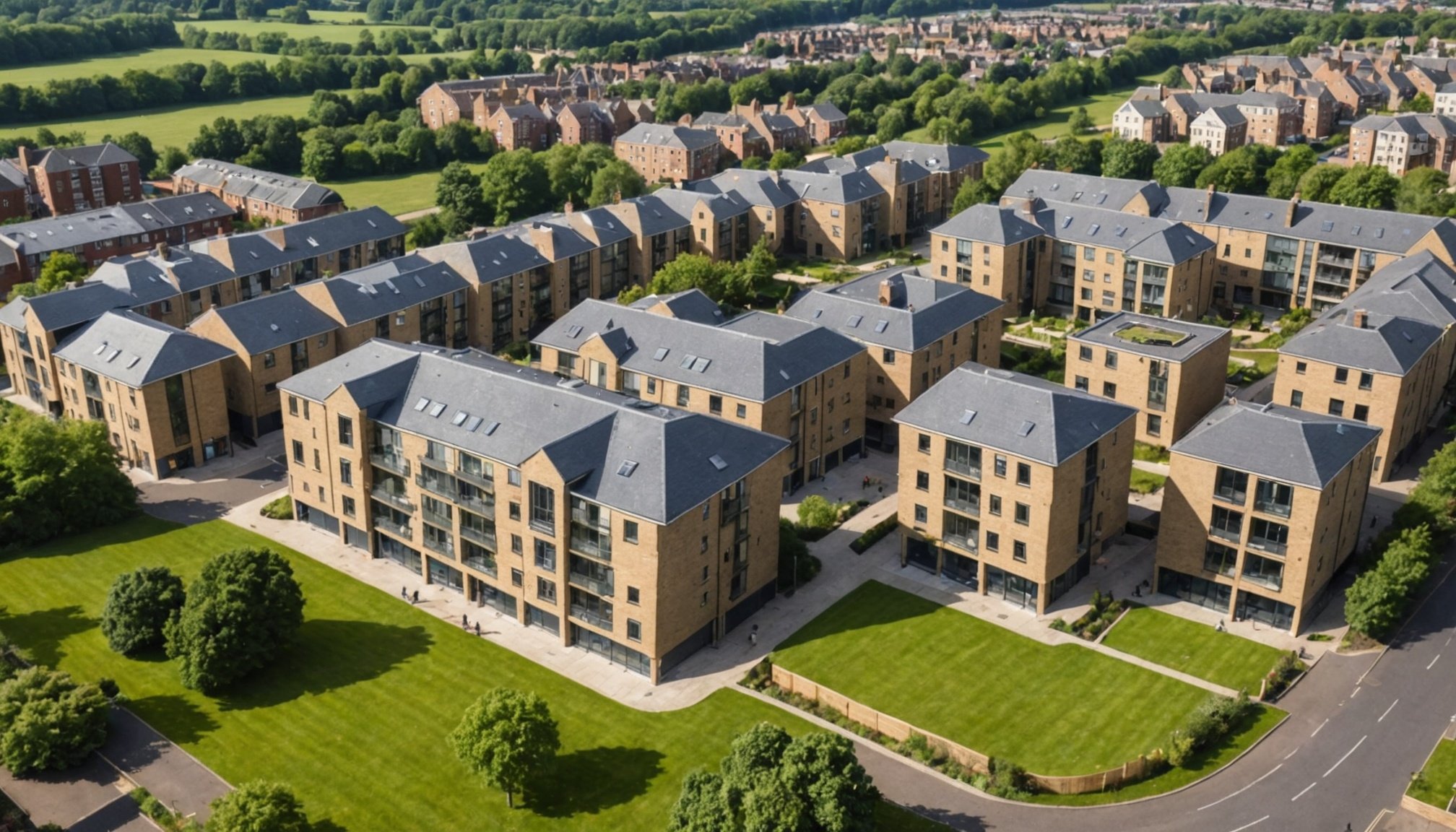Understanding Community Needs in Housing Development
To ensure successful housing development, it’s essential to prioritize community engagement. When planners conduct comprehensive community needs assessments, they align their projects closely with the local residents’ needs. This process involves engaging with stakeholders through focus groups, surveys, and public meetings. These methods provide a platform for voices within the community to be heard, fostering a sense of ownership and inclusivity.
A thorough stakeholder analysis should be conducted to identify key groups and individuals who significantly impact or are affected by the project. These stakeholders might include local government officials, community leaders, and residents. Engaging with this diverse group early and consistently leads to stronger partnerships and mitigates potential conflicts.
This might interest you : Maximizing Returns: The Financial Perks of Investing in Real Estate Near UK Film Studios
Additionally, analyzing demographic data is crucial for informed decision-making in housing development. Understanding the age, income, and family structure demographics helps planners respond effectively to current and future demands. This informed approach ensures resources are allocated efficiently and equitably.
By integrating community needs assessments into the planning process, housing developments become better tailored to meet the social, economic, and environmental expectations of the community, ultimately leading to more sustainable and harmonious projects.
Have you seen this : Essential risk management tactics for property investors in the uk’s high-seismic zones
Sustainable Development Practices
Adopting sustainable development practices in housing projects leads to both environmental benefits and enhanced community well-being. The use of sustainable building materials such as bamboo, recycled steel, and hempcrete minimizes the environmental impact. These materials not only reduce carbon footprints but also improve the structural integrity of buildings, ensuring long-lasting resilience against climate challenges.
Incorporating green spaces is another vital aspect of sustainable housing. These areas promote biodiversity and provide recreational spaces that improve the residents’ quality of life. Beyond aesthetic values, green spaces contribute to better air quality and temperature regulation, which are crucial for urban areas prone to heat islands.
The long-term impact of sustainable practices extends to economic savings. Energy-efficient designs reduce utility costs for residents and contribute to the community’s overall economic viability. Moreover, these practices attract socially conscious investors and developers, fostering a market that values environmental stewardship.
Implementing sustainable development techniques ensures that housing projects are not just seen as buildings, but as part of a harmonious community fabric. This forward-thinking approach aligns with the growing demand for environmentally responsible living solutions, enabling communities to thrive while safeguarding natural resources for future generations.
Building Partnerships and Collaborations
The role of stakeholder collaboration is pivotal in housing projects, forming the backbone of well-integrated and successful developments. Engaging key stakeholders early, such as local government bodies, community leaders, and residents, not only strengthens project impact but also fosters partnerships that are vital for long-term success.
In emerging UK housing markets, there are numerous success stories of how strategic partnerships have led to fruitful outcomes. Take, for example, collaborations with local organizations, which have helped streamline resources and align project objectives with community aspirations. These partnerships have often been instrumental in overcoming challenges typical of large-scale housing projects.
Maintaining effective communication with stakeholders is essential. Best practices involve regular updates and transparent dialogue, ensuring all parties are informed and engaged. Local organizations often act as mediators, bridging the gap between developers and residents. This dynamic helps in addressing concerns promptly and ensures alignment of the project’s goals with community expectations.
By prioritizing stakeholder collaboration, developers can create synergies that enhance housing projects. It’s all about weaving a fabric of interconnectedness that not only benefits the construction phase but also enriches the lived experience of future residents. With such collaborations, the development process becomes holistic and community-focused.
Case Studies of Successful Community Impact
Exploring case studies of innovative housing developments provides valuable insights into their community outcomes. These projects often highlight how collaboration with stakeholders can yield impactful results. By examining the effective housing initiatives across the UK, we can identify strategies that have successfully aligned with community goals and needs.
Examination of Effective Housing Projects
Several UK projects have demonstrated success through strategic stakeholder engagement. These initiatives illustrate the importance of integrating feedback from various community groups, ensuring that housing developments serve the interests of local residents while accommodating future demands.
Analysis of Community Feedback and Adaptation
Community feedback plays a critical role in the success of housing projects. For example, one development might have adapted its design to include more green spaces after resident consultations emphasized the need for recreational areas. Such adjustments lead to greater satisfaction and continued project support.
Lessons Learned from Community-Centric Development
Successful projects showcase the value of positioning community input at the forefront of planning. Through examining these case studies, developers can learn the importance of being adaptive and responsive to resident needs, creating environments that reflect the collective vision of the community for more sustainable and harmonious living spaces.
Measuring Community Impact and Success
To evaluate community impact effectively, utilising both qualitative and quantitative metrics is crucial. Key community metrics include resident satisfaction levels, changes in local economic conditions, and improvements in social infrastructure. A comprehensive impact assessment can provide insights into how various elements of a housing project enhance or challenge the community’s wellbeing.
Advanced tools and methodologies streamline the evaluation process. Surveys and focus groups gather qualitative feedback, while economic indicators and demographic shifts provide quantitative data. Evaluation of these elements helps in understanding community dynamics and the project’s influence on them.
Feedback loops form an essential component of ongoing project improvement. By maintaining open channels for continuous input, developers can adjust strategies in real-time, addressing concerns promptly and enhancing project alignment with community expectations. This iterative process encourages ongoing dialogue between stakeholders and residents, fostering a culture of transparency.
Ultimately, understanding and measuring community impact require a multi-faceted approach combining metrics, assessments, and responsive strategies. These efforts provide a deeper comprehension of how housing initiatives satisfy community needs, ensuring projects are not just successful in completion but beneficial in the long term. This dedication to evaluation exemplifies a commitment to community-oriented success.
Future Trends in Community-Oriented Housing Developments
As the demand for community-oriented design grows, emerging trends are reshaping housing developments. A significant trend is the incorporation of smart infrastructures, which enhance resident experiences through convenience and efficiency. Technology plays a pivotal role by facilitating community engagement via digital platforms that connect residents and planners directly.
Another trend involves prioritising adaptable living spaces. This approach acknowledges the evolving needs of residents, ensuring that housing remains functional over time. These adaptable designs cater to diverse family structures and varying life stages, emphasising flexibility and inclusivity.
In the UK, the predictions lean towards integrating environmentally-friendly materials and designs that promote sustainability. This not only meets ecological goals but also aligns with global environmental standards, fostering both social responsibility and community resilience.
Enhanced community engagement techniques are also anticipated to become more prevalent. Tools like virtual reality can allow residents to visualise project outcomes and provide feedback, creating a more participatory planning process. These trends reflect a shift towards more holistic and inclusive development processes, ensuring that future projects are closely tailored to the actual desires and needs of their communities.

